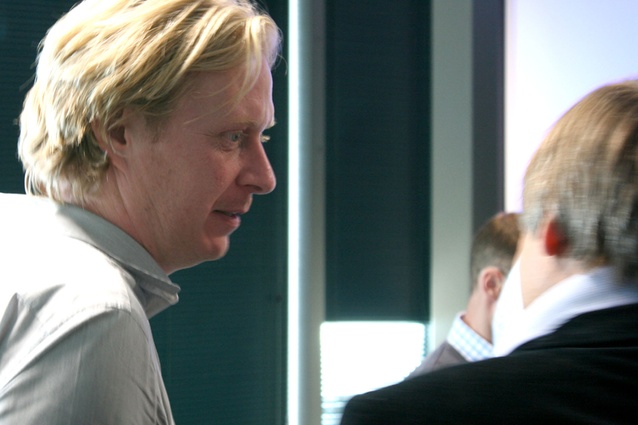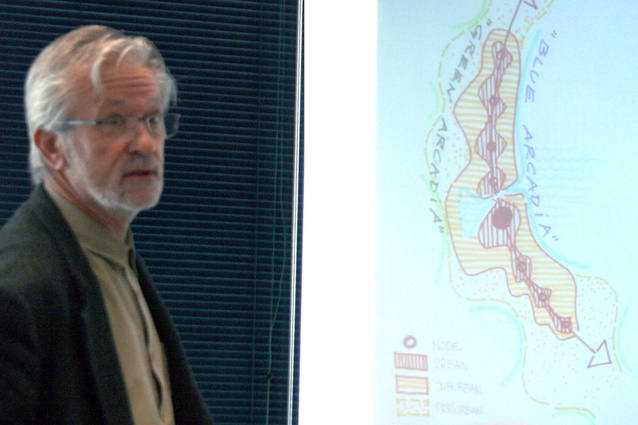Kiwi urbanism struggling to fly
Judging from the all-day Urbanism Downunder event held at Te Papa on Friday 30 March, the concept of a “Kiwi urbanism” may not be in dead in the water but is certainly struggling to take anything near full flight.
This event, run by the Urban Design Forum (UDF), saw approximately 100 supporters of urban design assembled together – with a third of the room occupied by architects and landscape architects, accompanied by town planners, surveyors and sundry outliers including Labour spokesperson for Auckland Issues, Phil Twyford.
Given spatial plans are now a key frontier and hunting ground for urban design in 2012 it was fitting that the first three speakers at this UDF event spoke on that topic from the perspectives of Christchurch, Wellington and Auckland city councils.
Describing the planning progress in post-disaster Christchurch as a “moving feast”, Hugh Nicholson drew attention to the importance being given to implementation of catalyst projects alongside light-handed regulation. Hugh also shared his reflections on what it has been like to produce robust new plans under such unusual circumstances, without the typical drivers of council or developer-led decision taking. “It’s not as simple or as sane as it sounds”.
Speaking on behalf of the UDF, David Mead delivered a vote of thanks to the planning teams at work in Christchurch, noting that whatever happens in Christchurch will set an agenda for the future.
Moving to the kind of future being secured for Wellington’s naturally compact city, Brian Hannah outlined a series of responses centred more on a flexible, slow change approach and on detailed city-scale analyses that take the time to drill down to the city’s “lost and leftover built form”.
Tim Watts, Auckland Council’s Built Environment Unit manager, addressed the kaleidoscope that is Auckland’s urban form. Speaking hot on the heels of the formal adoption of the Auckland Plan on 29 March, Tim said that the most prominent “red flag” is the risk of the planning process being too distant from engagement with the community – due to initial timeframes but with steps being taken to ensure planning is aligned to Local Boards as well as supported by development of an ‘Auckland Design Manual’.
“Spatial plans help us get under the skin of places, they’re a step in the process but not the absolute final word”.
Topics covered in the remainder of the one-day forum included: the Ormiston Town Centre; case studies of medium-density housing; uses of well-planned urban corridors; the least-worst of land development and subdivision design; threats and opportunities associated with seal level rise, tectonic impacts and a water rich environment; landscape as an architectural form and performative gardening; and a tale of two waterfronts (Wellington and Auckland).
On this debate David Irwin, of Isthmus, took the angle of reconciling a New Zealand view of urbanism by accepting ourselves as a country of small suburban builders, with the addition of sophisticated materials and design.
He demonstrated the benefits of focusing on residential typologies – particularly at the point where the detached house model runs out of both land and creative juice. Through a series of case studies derived from Auckland’s inner suburbs he highlighted the potential of fee simple urban development. The urban solutions he had chased down were neither unit title terraces, nor apartments, nor villas – instead they all utilised the full footprint of a site but each with a different set of feet he described as an “urban solution right outside our door”. If seen side-by-side they would have an echo of Amsterdam’s famous Borneo Sporenburg.
Another alternative viewpoint for rethinking urbanism at scale in New Zealand was presented by Dr Dushko Bogunovich of Unitec. Dushko argues for a less contained, more unleashed vision of our cities – Auckland in particular. His position is that an urban-rural split is an obsolete concept. Considering also that all of New Zealand’s three major cities straddle such vulnerable topography he advocates turning Auckland into a vertical, 100km long, literal city based on a macro-region running north to south.
Some participants noted it was now seven years since a major conference on urbanism was held in Wellington to mark the Year of the Built Environment – a heyday event that spanned three days, acted as a launch-pad for such landmark documents as the New Zealand Urban Design Protocol (UDP) and The Value of Urban Design report, and was also called “Urbanism Down Under”. Unfortunately as confirmed at the forum by the Ministry for the Environment’s Yvonne Weeber, the UDP’s potential – it has 187 signatories – is more latent than active, and the Ministry is currently reviewing the best management model for the UDP, with some answers likely by the end of June. The level of interest this does, or does not, generate will be worth watching for.
The Urban Design Forum provides opportunities for a broad cross-section of professions and disciplines. UDF partners include the planning, landscape, architecture, engineering and surveying Institutes. UDF membership is open to anyone interested in promoting good urban design with more details available at http://urbandesignforum.org.nz











